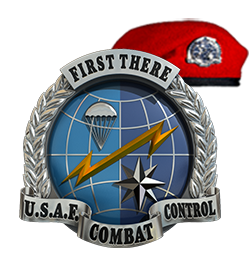Becoming a Combat Controller
To become a Combat Controller, there is a gauntlet of challenges to overcome. You will train a minimum of 35 weeks to become a Combat Controller. This is just the training that takes place before you get assigned to a team.
Seasoned Combat Controllers say, the team house is where the real training begins. You will need to be fit, you will need to be mentally flexible and you must be emotionally committed.
After BMT (Basic Military Training) You Will Attend the following courses. This is the core training requirements, not the entire list of training courses you will experience across a career as a Combat Controller.
Combat Control Orientation Course
Lackland AFB, San Antonio, Texas
This 10-day orientation course focuses on sports physiology, nutrition, basic exercises, CCT history and fundamentals.
Combat Control Operator Course,
Keesler AFB, Biloxi, Mississippi
This course is taught in two phases. Phase 1 is Combat Control Fundamentals consisting of 28-training days. Phase 2 is Combat Control Apprentice-Tower and runs for 52-training days. The course teaches aircraft recognition and performance, air navigation aids, weather, airport traffic control, flight assistance service, communication procedures, conventional approach control, radar procedures, and air traffic rules. This is the same course that all other Air Force air traffic controllers attend. This is the core skill of a combat controller’s job.
U.S. Army Airborne School,
Fort Benning, Columbus, Georgia
This 15-training days course teaches basic parachuting skills required to infiltrate an objective area by static line airdrop.
U.S. Air Force Basic Survival School
Fairchild AFB, Spokane Washington
This 17-day course teaches basic survival techniques for remote areas. Instruction includes principles, procedures, equipment and techniques, which enables individuals to survive, regardless of climatic conditions or unfriendly environments and return home.
Combat Control School,
Pope AFB, Fayetteville, North Carolina
This 84-training day course provides final CCT qualifications. Training includes physical training, small unit tactics, land navigation, communications, assault zones, demolitions, fire support and field operations including parachuting. At the completion of this course, each graduate is awarded the 3-skill level (journeymen), scarlet beret and CCT flash.
Special Tactics Advanced Skills Training
Hurlburt Field, Fort Walton, Florida
Advanced Skills Training (AST) is an 11-12 month program for all Combat Controllers before they are assigned to an operational squadron. AST produces mission-ready operators for the Air Force and United States Special Operations Command. The AST schedule is broken down into three phases: formal training, core skills training and operational readiness training. The course tests the trainee’s personal limits through demanding mental and physical training. Combat controllers also attend the following schools during AST:
U.S. Army Military Freefall Parachutist School
Fort Bragg, North Carolina, and Yuma Proving Grounds, Arizona
This course instructs trainees in free fall parachuting procedures. The first week of the course consists of wind tunnel training at Ft. Bragg, N.C. The instruction focuses on in-air student stability, aerial maneuvers, air sense, parachute opening procedures. The students then relocate to Yuma, Ariz., where they begin freefall parachute jumping. The jumps progress from lower to higher altitudes, day to night jumps, “slick” to combat equipment configuration with weapon attached and use of supplemental oxygen.
U. S. Air Force Combat Divers School
Panama City, Florida
Trainees become combat divers, learning to use open circuit (Self Contained Underwater Breathing Apparatus – SCUBA) and closed circuit (LAR-V, Draeger Underwater Breathing Apparatus) diving equipment to covertly infiltrate denied areas. The course is run in two phases. Phase 1 is 21 days in length and consists of pool training and diving to depths of 130 feet, stressing development of maximum underwater mobility under various operating conditions. Phase 2 is 13-days in duration and consists of equipment familiarization and diving using the closed circuit system.

